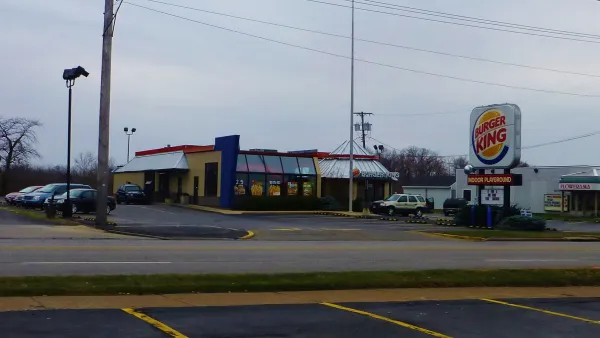A new study published in the February issue of Health Affairs presents evidence that providing fresh food in food deserts does not improve diets or health outcomes for residents.

Adding supermarkets to neighborhoods with a dearth of access to fresh and healthy food does not lead to improvements in residents' diets or health outcomes, according to an article by Clara Ritger, who details the findings of a report by a team of researchers from the London School of Hygiene and Tropical Medicine and Penn State University's departments of sociology, anthropology, and demography.
According to Ritger’s description, the study compares two neighborhoods in Philadelphia, one which received a new supermarket, and one which did not: “When a grocery store was opened in one Philadelphia food desert, 26.7 percent of residents made it their main grocery store and 51.4 percent indicated using it for any food shopping, the report found. But among the population that used the new supermarket, the researchers saw no significant improvement in BMI, fruit and vegetable intake, or perceptions of food accessibility, although there was a significant improvement in perception of accessibility to fruits and vegetables.”
Ritger’s reporting connects the study’s findings to the $500 million federal Healthy Food Financing Initiative: “if the conclusion is borne out, it would suggest that policymakers rethink the Healthy Food Financing Initiative if they want to promote healthier eating and healthier citizens.”
The new report isn’t the first in 2014 to question whether current programs are doing enough to solve the growing problem of obesity in this country. But then again, another recent report ties fast food to growing Body Mass Index in wealthy countries.
FULL STORY: Bad News for Obama’s Antiobesity Effort

National Parks Layoffs Will Cause Communities to Lose Billions
Thousands of essential park workers were laid off this week, just before the busy spring break season.

Retro-silient?: America’s First “Eco-burb,” The Woodlands Turns 50
A master-planned community north of Houston offers lessons on green infrastructure and resilient design, but falls short of its founder’s lofty affordability and walkability goals.

Delivering for America Plan Will Downgrade Mail Service in at Least 49.5 Percent of Zip Codes
Republican and Democrat lawmakers criticize the plan for its disproportionate negative impact on rural communities.

Test News Post 1
This is a summary

Test News Headline 46
Test for the image on the front page.

Balancing Bombs and Butterflies: How the National Guard Protects a Rare Species
The National Guard at Fort Indiantown Gap uses GIS technology and land management strategies to balance military training with conservation efforts, ensuring the survival of the rare eastern regal fritillary butterfly.
Urban Design for Planners 1: Software Tools
This six-course series explores essential urban design concepts using open source software and equips planners with the tools they need to participate fully in the urban design process.
Planning for Universal Design
Learn the tools for implementing Universal Design in planning regulations.
EMC Planning Group, Inc.
Planetizen
Planetizen
Mpact (formerly Rail~Volution)
Great Falls Development Authority, Inc.
HUDs Office of Policy Development and Research
NYU Wagner Graduate School of Public Service




























